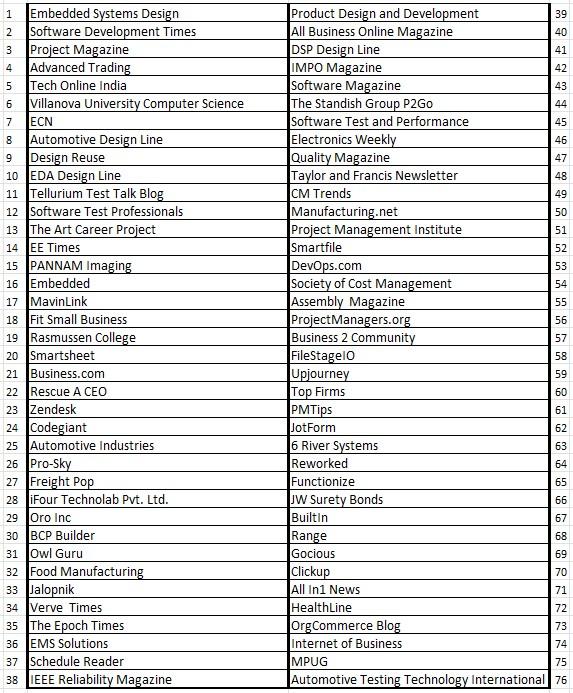Vehicle Architectural Design
Introduction
I recently taught a FPM 513 – IT Infrastructure and Architectural Design. I so enjoy teaching when the class, by and large, is engaged. This led to my thinking on vehicle architecture (electrical/electronic).
In automotive development, infrastructure, and architectural design are essential to ensure that vehicle systems are robust, efficient, and adaptable. By focusing on the mechanical and physical aspects of vehicle components—excluding traditional IT systems—manufacturers and engineers can align every subsystem seamlessly. This alignment enhances vehicle safety, performance, and maintainability across diverse product lines.
This post will explore how Vehicle Architectural Design underpins modern vehicle systems. We will also examine model topologies and frameworks, the role of systems engineering, and how effective configuration management can streamline the entire development process.
The Importance of Infrastructure in Vehicle Systems
A well-defined infrastructure in automotive design sets the foundation for how individual components—from powertrains to chassis—work together. Key considerations include:
- Physical Space Allocation: Ensuring each subsystem has ample room for mechanical components and integration without interference.
- Materials and Weight Distribution: Selecting suitable materials and organizing components to optimize vehicle weight for better handling and efficiency.
- Safety Compliance: Designing with regulatory standards in mind, particularly those concerning crashworthiness, occupant safety, and emissions.
- Scalability and Modularity: Allowing vehicle platforms to accommodate multiple models and variants without significant rework.
When the infrastructure is robust, it paves the way for a smoother architectural design process, minimizing costly revisions later in the development cycle.
Major Architectural Frameworks and Model Topologies
Architectural frameworks define how different mechanical components interact and communicate within a vehicle. Common approaches include:
- Layered Architecture
- Purpose: Separates functionality into layers (e.g., powertrain layer, chassis layer, body structure layer) for more apparent development and maintenance.
- Advantages: Improves modularity and simplifies troubleshooting by isolating potential issues within a specific layer.
- Component-Based Architecture
- Purpose: Focuses on the interactions and interfaces among components such as the engine, transmission, and suspension.
- Advantages: Allows easy upgrades or replacements of components without overhauling the entire vehicle structure.
- V-Model Approach
- Purpose: Emphasizes verification and validation at every stage, from concept to final deployment.
- Advantages: Ensures each design requirement is methodically tested and confirmed throughout development.
Vehicle Architectural Design can be systematically optimized for better performance and reliability by choosing the correct topology and framework.
The Role of Systems Engineering in Vehicle Development
Systems engineering provides a structured approach to integrating various vehicle subsystems. It ensures:
- Holistic Perspective: Every mechanical component is considered part of a larger whole, reducing conflicting requirements.
- Requirements Management: Establishing clear, measurable design objectives from the outset.
- Iterative Validation: Utilizing prototypes and simulations to refine designs and catch defects early.
- Risk Management: Identifying and proactively addressing potential failure modes (e.g., friction points, vibration issues).
Incorporating systems engineering principles into Vehicle Architectural Design makes navigating complexities, managing cross-functional teams, and adapting to evolving regulations easier.
Configuration Management in Automotive Design
Configuration management ensures consistent tracking and control of design changes. Its key benefits include:
- Version Control: Records every design iteration, preventing confusion when multiple stakeholders modify components.
- Traceability: Links all changes to specific requirements, facilitating swift debugging and audits.
- Change Impact Analysis: Evaluate the ripple effect of design modifications on interconnected subsystems (e.g., altering the suspension geometry may affect the drivetrain).
- Product Lifecycle Management (PLM): Maintains design data throughout the vehicle’s lifecycle, ensuring support for maintenance and updates.
Organizations can maintain a clear development trail with robust configuration management and ensure uniformity across vehicle variants.
Common System Models in Vehicle Architecture
Engineers often use various models to represent, analyze, and refine vehicle systems. Here are a few widely used examples:
- Structural Model
- Focus: Mechanical composition, chassis design, and load-bearing elements.
- Description:
- Illustrates how the vehicle’s main structural components (e.g., chassis, body-in-white, subframes) fit together.
- Highlights load paths, stress points, and potential areas of mechanical fatigue.
- Typical Use:
- Assess crashworthiness and occupant safety by simulating stress and deformation under impact.
- Evaluate how different materials (steel, aluminum, composites) affect overall vehicle weight and rigidity.
- Behavioral Model
- Focus: Dynamic response of the vehicle to various inputs and external conditions.
- Description:
- The internal states and transitions within subsystems (e.g., drivetrain, suspension) depend on driver actions and environment.
- Visualizes interactions under different scenarios: acceleration, braking, cornering, and varying road surfaces.
- Typical Use:
- Optimize control strategies (e.g., traction control, suspension damping) for better handling and ride comfort.
- Validate vehicle performance goals (e.g., top speed, fuel efficiency) through simulations before physical prototyping.
- Functional Model
- Focus: High-level operations and capabilities of each subsystem.
- Description:
- Maps out the information, energy, or signals flow between systems (e.g., how power flows from the engine to the wheels).
- Examines inputs, outputs, and processes required to achieve each function (e.g., braking, steering, power generation).
- Typical Use:
- Identify and formalize design requirements for each function (e.g., torque output, braking distance).
- Pinpoint potential conflicts or redundancies between different vehicle features and systems.
- Physical Model
- Focus: Actual physical layout and spatial configurations of vehicle components.
- Description:
- Details the placement and orientation of mechanical parts, wiring harnesses, fuel lines, etc.
- Ensures proper clearances, access for maintenance, and compliance with manufacturing constraints.
- Typical Use:
- Guide assembly-line design and tooling decisions.
- Verify that design changes in one subsystem (e.g., a larger fuel tank) do not negatively impact neighboring components.
- Domain-Specific Models (Optional, more specialized)
- Focus: Particular engineering domains like aerodynamics, thermal management, or NVH (Noise, Vibration, and Harshness).
- Description:
- Delve deeply into the specialized physics and interactions relevant to that domain (e.g., flow dynamics around the vehicle’s body).
- Often employ advanced simulation tools (e.g., CFD for aerodynamics).
- Typical Use:
- Troubleshoot domain-specific performance issues (e.g., reducing wind noise at high speeds).
- Validate that new design elements (e.g., active grill shutters) meet performance targets without compromising other systems.
By employing some of these system models, automotive teams can verify that each mechanical subsystem aligns with the overall vehicle goals, all while minimizing the risk of costly reworks.
Testing in Model Development
Developing and maintaining multiple system models demands rigorous testing and configuration management to ensure consistent, accurate, and up-to-date representations of each vehicle subsystem. Models are theoretical, and it is prudent to compare this theoretical to the actual. This will require testing and verification actions. Models become mature through testing and verification activities. Below are key considerations:
- Verification and Validation
- Verification involves checking that the model correctly implements the design specifications (e.g., ensuring the suspension model reflects the chosen spring rates and damping coefficients).
- Validation assesses how accurately the model predicts real-world behavior (e.g., comparing simulation results to actual vehicle tests).
- Benefits: Early detection of design flaws, reduced risk of late-stage rework, and confidence in model outputs used for decision-making.
- Iterative Testing
- Simulation Cycles: Models—primarily behavioral and functional—are tested in simulated environments under various load, speed, and operational conditions.
- Prototyping: Simulation results guide the creation of physical prototypes, which undergo lab and track tests. Data gathered from these tests then refine and improve model accuracy.
- Continuous Improvement: This iterative loop is repeated until the virtual model aligns with physical test data within acceptable tolerances.
Configuration Management in Model Development
As the models and the proposed design incarnation mature, we will need controls over the models and the actual products subjected to testing to compare the models to the actual, these are opportunities for learning. Below are key considerations:
- Version Control
- Change Tracking: Any modification to model parameters (e.g., new component dimensions, updated material properties) is recorded, along with timestamps and rationale for each change.
- Collaboration: Multiple engineering teams—handling powertrain, chassis, or body design—can confidently work on the same models without overwriting each other’s work.
- Traceability: All changes are traceable back to specific requirements, which facilitates audits, troubleshooting, and safety compliance checks.
- Baseline Management
- Reference Points: Certain model states are declared baselines, representing official “snapshots” of the design at key milestones (e.g., concept approval, preliminary design release).
- Consistency: Baselines ensure that simulations and analyses compare like-for-like conditions across different teams and timeframes.
- Risk Mitigation: If newer changes prove unstable or produce unfavorable outcomes, teams can revert to a previous baseline without losing critical design progress.
- Documentation and Communication
- Shared Repositories: Centralized documentation of model configurations, test results, and simulation methodologies streamlines knowledge transfer.
- Clear Communication Channels: Engineers across different domains share insights and findings promptly, ensuring all model updates reflect the latest information.
- Alignment with Standards: Adhering to industry-wide documentation standards (e.g., ISO certifications) simplifies regulatory compliance and future audits.
By integrating robust testing protocols and systematic configuration management practices, development teams can maintain high-fidelity models that accurately inform vehicle architectural design decisions. This synergy ensures safer, more efficient, and more innovative automotive products.
Why Multiple Models + Rigorous Management Are Essential
- Holistic Analysis: Employing various models (structural, behavioral, functional, physical, and domain-specific) offers a full-spectrum view of potential design outcomes.
- Early Detection of Issues: Iterative testing pinpoints design flaws before they escalate into costly field problems.
- Consistent Model Accuracy: Configuration management and version control ensure all stakeholders refer to validated, up-to-date models.
- Regulatory and Safety Compliance: Documented verification and validation processes simplify compliance with stringent automotive safety standards.
Through disciplined testing and configuration management, automotive engineers protect the integrity of their models, enabling them to make informed, data-driven decisions that optimize the vehicle’s overall design, performance, and safety.
Conclusion
Infrastructure and architectural design are at the heart of any successful vehicle development endeavor. Organizations can produce safe, efficient, and future-ready vehicles by focusing on Vehicle Architectural Design through carefully applying model topologies, frameworks, systems engineering principles, and strict configuration management. Embracing these best practices fosters innovation, reduces errors, and ensures every mechanical component performs seamlessly within the broader automotive architecture.
For more information, contact us:
Follow us on social media at:
Amazon Author Central https://www.amazon.com/-/e/B002A56N5E
Follow us on LinkedIn: https://www.linkedin.com/in/jonmquigley/


